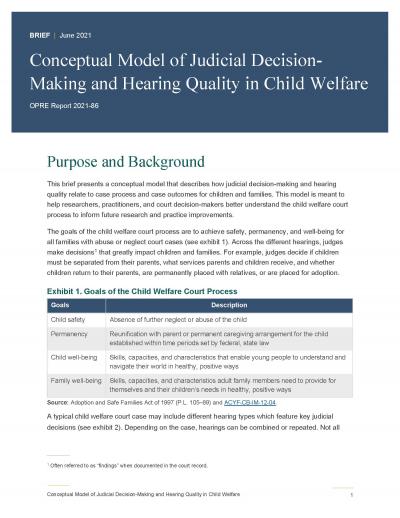This new brief presents a conceptual model that shows how aspects of the child welfare court process relate to case outcomes for children and families. This model can help researchers, practitioners, and policymakers better understand the child welfare court process to inform future research and practice improvements.
The child welfare court process seeks to achieve safety, permanency, and well-being for all families with abuse or neglect court cases. With these goals in mind, judges make decisions across the different hearings of a case that greatly impact children and families. Judges decide if children must be temporarily separated from their parents, for example, and what services parents and children receive. This brief presents a conceptual model that displays components of judicial decision-making and hearing quality and how they relate to case processes and outcomes for children and families.
Citation
Richards, T., Summers, A., Gatowski, S., Fromknecht, A., & Ruben, J. (2021). Conceptual model of judicial decision-making and hearing quality in child welfare (OPRE Report 2021-86). Office of Planning, Research, and Evaluation, Administration for Children and Families, U.S. Department of Health and Human Services.

